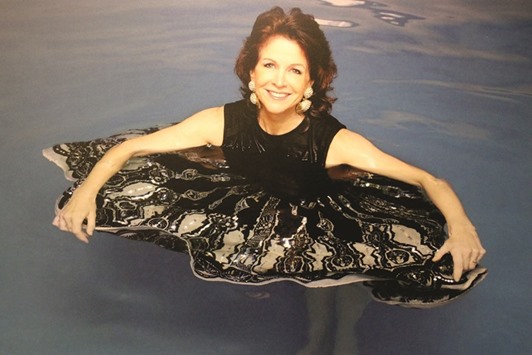He sees through structural, natural and man-made exteriors in order to reach the soul of his subjects, whether human figures or inanimate objects.
Giving expression to what is mysteriously creative in the ordinary world, Italian photographer Rocchi Bilancini’s work celebrates those formal structures that are part of people’s unconscious experience of everyday life.
A selection of striking images from his first published monograph, Pesci fuor d’acqua (Fish out of water) is currently on display at an exhibition at Katara Cultural Village, organised in collaboration with the Italian embassy in Qatar.
Bilancini has a fascination with water and it reflects in his work.
At the 2001 Venice Biennale, the Argentine artist Leandro Erlich exhibited his now famous installation, Swimming Pool. In what appeared to be a fully equipped pool, people could be seen under the water, standing, talking and moving around seemingly without any need to come up for air.
In Carlo Rocchi Bilancini’s photographs, some of these people finally surface. Untouched by their underwater ordeal, they continue their subaqueous activities as if nothing had happened – though one woman opens a parasol to keep off the sun, writes Malcolm Bull about Bilancini in his contribution in the artist’s first monograph published by Skira in 2011. The other contributors were Antonia Mulas and Brian O’Doherty.
“Water is a mobile element, which produces constant variations, reflections and plays of light. At times, I manage to capture and express these, but at other times they escape me or disappear before I take my shot,” Bilancini tells Federico Sardella in his interview published in the monograph.
The first subject he photographed in water, he adds, was Patrizia Chen and he did so almost by chance. He was portraying her by the pool, as she tangoed with a friend, when at a certain point Bilancini got the idea of also taking a few shots in the water.
“One of the problems I found right from the start since I found myself on a higher level than my subjects, was their inevitable flattening and the marked influence of the surrounding colours. After seeing the results I got with her I started getting friends and acquaintances involved in my projects,” he tells Sardella.
Carlo Rocchi Bilancini was born in Todi in 1973. A photographer with a unique artistic vision, he has been much influenced in his work by collaboration with the film director Pupi Avati. After graduating in Economics, he attended the Fondazione Forma per la Fotografia.
A solo show featuring a selection of photos from the book was held in 2012 during the 13th annual Venice Biennale for Architecture, in La Piscina on the Island of San Giorgio Maggiore. Hosted by the Fondazione Giorgio Cini, the show was curated by ?iva Kraus and promoted by Umberto Morera.
Among other solo exhibitions are Disgregazione at San Pietro Sopra le Acque, Massa Martana (2010) and Unknowing at the Hampstead Everyman in London, which was curated by Jill Foulston (2009). Group exhibitions include the Prize International Art Contest at the Wannabee Gallery in Milan (2010), and Note d’Artista at Palazzo Landi Corradi del Vignola in Todi (2010).
Rocchi Bilancini has collaborated with a variety of Italian and foreign publishing houses and magazines, and his work appears in Resa till Rom, which was published in Sweden by Ica Bokförlag in 2008.
Evocative and unsettling, Rocchi Bilancini’s photographs reveal his profound interest in essential forms.

Bilancini is a photographer with a unique artistic vision. Photos by Carlo Rocchi Bilancini


